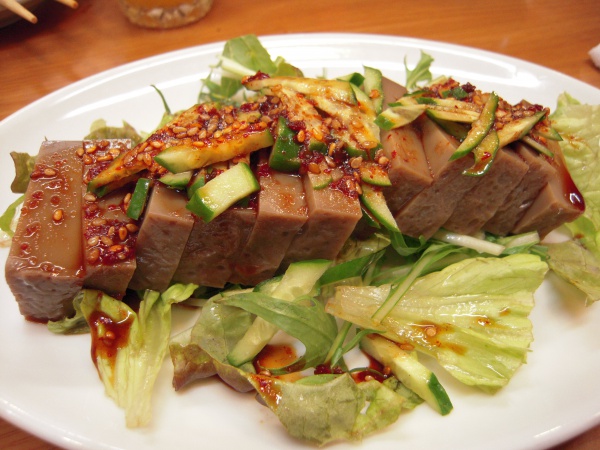Facts About Muk
Muk, sometimes spelled as mook, is a traditional Korean food derived from the starch of grains, beans, or nuts such as buckwheat, sesame, and acorns. It possesses a jelly-like texture and is generally quite bland on its own. However, muk dishes are typically seasoned with flavorful ingredients such as soy sauce, sesame oil, scallions, gim (Korean nori), and chili pepper powder, in addition to various vegetables, enhancing their taste.
There are several types of muk, each made from different starches:
- Dotorimuk: Made from acorn starch.
- Memilmuk: Made from buckwheat starch.
- Nokdumuk: Made from mung bean starch.
- Hwangpomuk or Norangmuk: Made from mung bean starch and colored yellow with gardenia.
- Kkaemuk: Made from sesame seeds.
- Green Pea Muk Varieties: Such as Cheongpo Muk and Hwangpo Muk.
Muk can be prepared in various ways to create diverse dishes:
- Mukmuchim: A seasoned muk dish with soy sauce, sesame or perilla oil, green onions, sesame seeds, and chili pepper powder.
- Tangpyeongchae: Made with thinly sliced nokdumuk, beef, vegetables, and seaweed.
- Mukbokkeum: A stir-fried muk dish.
- Mukjangajji: Muk marinated in soy sauce.
- Mukjeonyueo or Mukjeon: Pan-fried sliced muk coated with mung bean starch.
- Muksabal or Mukbap: A cold soup made with muk and sliced vegetables.
These dishes demonstrate the versatility of muk, illustrating how it can be transformed from a bland jelly-like substance into a flavorful and satisfying meal.

 North Korea
North Korea